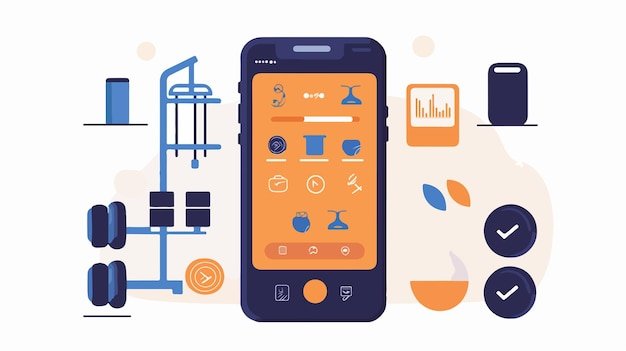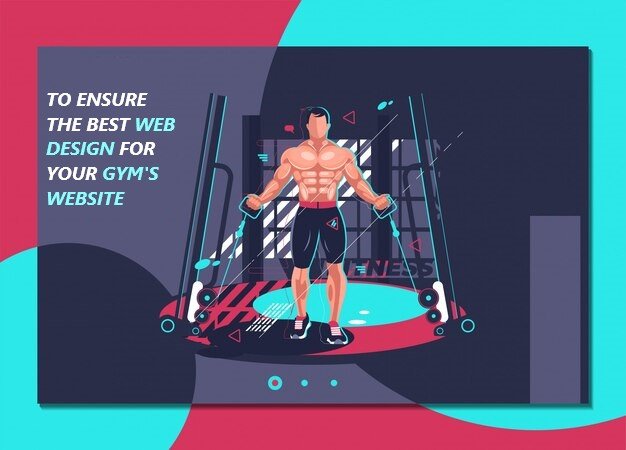A well-designed website is essential for gyms and fitness centers aiming to attract more clients, promote services, and boost membership. The best web design for a fitness website is not just about aesthetics—it’s about functionality, user experience, and aligning with your gym’s branding and goals.
In this blog, we will explore the key elements to ensure the best web design for fitness website, tailored specifically for gyms. By the end of this guide, you will know how to create a dynamic, functional, and visually appealing website that stands out in the fitness industry.
Understanding Your Gym’s Target Audience
The first step to ensuring the best web design for a fitness website is understanding your audience. Your gym’s website should cater to the needs and preferences of the individuals you are trying to attract. Are you targeting beginners, advanced athletes, or a particular demographic, such as seniors or women?
Why It Matters:
- User-Centric Design: A design that speaks directly to your target audience ensures higher engagement.
- Personalized Content: Your website should feature content and visuals that resonate with your specific client base, be it health tips, workout videos, or member testimonials.
By clearly identifying your target audience, you can tailor your design and content to meet their needs, making sure that your website feels welcoming and relevant.
The Role of User Experience (UX) in Fitness Website Design

The user experience (UX) of your gym’s website can make or break your conversion rate. A website that is hard to navigate will drive visitors away, while an intuitive and streamlined UX will keep them engaged and more likely to convert into paying members.
Key UX Elements:
- Simple Navigation: Make it easy for users to find the information they are looking for, whether it’s class schedules, membership details, or contact information.
- Call to Action (CTA): Your gym’s website should feature strong CTAs, such as “Join Now,” “Book a Free Class,” or “Download Our App.” Ensure they are prominent and clear to encourage visitor engagement.
- Fast Load Times: Speed is critical for retaining visitors. A slow-loading website frustrates users, leading to high bounce rates.
The best web design for fitness websites prioritizes ease of use, making sure that visitors can quickly navigate through the pages without unnecessary distractions or delays.
Designing for Mobile Responsiveness
With more than half of web traffic now coming from mobile devices, mobile responsiveness is crucial to ensuring the best web design for your gym’s website. A mobile-friendly site ensures that users have a seamless experience whether they are browsing on their phone, tablet, or desktop.
Key Considerations:
- Responsive Layout: Your site should automatically adjust its layout and content to fit the screen size of the device being used.
- Clickable Elements: On mobile devices, buttons and links should be easily clickable without requiring users to zoom in or scroll excessively.
- Fast Mobile Load Times: Mobile users often have shorter attention spans, so it’s crucial to optimize load times by compressing images and reducing the number of HTTP requests.
A mobile-responsive design ensures that your gym’s website is accessible and functional for all visitors, improving overall user satisfaction.
Essential Features for the Best Web Design for Fitness Website
Certain features are non-negotiable when it comes to fitness websites. These elements ensure that your gym’s site not only looks good but also performs well in meeting the needs of potential and current members.
Must-Have Features:
- Class Schedules and Events: Make sure your class schedules are easy to find, regularly updated, and clearly displayed. Consider integrating a dynamic schedule that allows members to filter by class type, instructor, or time.
- Membership Information: Provide detailed information about the different membership tiers, pricing, and benefits. Include a FAQ section to address common queries.
- Testimonials and Reviews: Highlight client success stories and positive reviews to build trust with potential members.
- Trainer Bios: Feature profiles of your trainers, including their qualifications and specialties, to help clients connect with them on a personal level.
- Online Booking System: Allow members to book classes or training sessions directly through your website.
Incorporating these essential features will ensure your site meets the standards of the best web design for fitness websites, driving engagement and boosting conversions.
Enhancing Your Gym’s Website with Visual Elements
Visuals play a significant role in web design, especially for fitness websites. The right combination of images, videos, and design elements can inspire visitors and motivate them to take action, whether that’s signing up for a membership or attending a class.
Visual Elements to Include:
- High-Quality Images: Use professional photos of your gym, staff, and members to showcase your facility and create a positive first impression.
- Videos: Incorporate short workout videos, gym tours, or testimonials to engage visitors and provide a dynamic user experience.
- Consistent Branding: Ensure your logo, color scheme, and fonts are consistent across all pages, creating a cohesive brand identity.
The best web design for fitness websites leverages visual elements to create an engaging and motivating atmosphere that aligns with your gym’s mission.
SEO Best Practices for Fitness Websites
Search Engine Optimization (SEO) is essential for making sure your gym’s website ranks highly on search engines like Google. Implementing SEO best practices will increase your website’s visibility, driving more organic traffic to your site.
SEO Tips:
- Keyword Optimization: Use relevant fitness-related keywords, such as “gym near me,” “personal training,” and “group classes,” throughout your site content.
- Meta Descriptions and Titles: Optimize your meta titles and descriptions to include target keywords and entice users to click through to your site.
- Image Optimization: Use descriptive alt text for images and compress them to reduce load times, improving your site’s overall SEO performance.
- Local SEO: Claim and optimize your Google My Business listing and ensure your site contains location-specific keywords to attract local clients.
Implementing these SEO strategies will help ensure your site follows the best practices for the best web design for fitness websites, improving both traffic and engagement.
Integration of Booking Systems and Client Portals

A well-designed gym website should offer easy access to essential features, such as online booking and client portals. This not only enhances user experience but also helps streamline your gym’s operations.
Features to Consider:
- Class and Session Bookings: Implement a user-friendly system that allows members to book group classes, personal training sessions, or consultations directly from your website.
- Client Portals: Offer members a personal login where they can view their schedules, make payments, and track their fitness progress.
By integrating these systems, you provide convenience for your clients while improving your business’s efficiency.
How to Choose the Right Web Design Platform
Selecting the right web design platform is crucial for ensuring that your gym’s website is easy to manage and update regularly. Popular platforms for fitness websites include WordPress, Wix, and Squarespace, each offering varying levels of customization and functionality.
What to Look for in a Platform:
- Ease of Use: Choose a platform that allows you to make changes without needing extensive technical skills.
- Customization Options: Ensure the platform offers the flexibility to create a unique design that reflects your gym’s branding.
- Integration Capabilities: The platform should support integrations with booking systems, payment processors, and other tools essential for running a fitness business.
The right platform will give you the flexibility to create and maintain the best web design for fitness websites that is both functional and visually appealing.
Ensuring Site Speed and Performance
A fast-loading website is essential for user retention and SEO. Slow sites can frustrate users, causing them to leave your site before exploring what your gym has to offer.
Tips for Optimizing Site Speed:
- Optimize Images: Compress large images without losing quality to improve load times.
- Minimize Plugins: Avoid unnecessary plugins and scripts that can slow down your site’s performance.
- Use a Content Delivery Network (CDN): CDNs can improve load times by distributing your website’s content across multiple servers worldwide.
Ensuring that your site runs smoothly is a key element in achieving the best web design for fitness websites, enhancing user experience and reducing bounce rates.
Regular Updates and Maintenance
Finally, maintaining the best web design for fitness websites requires regular updates and maintenance. Whether it’s updating class schedules, posting new blog content, or adding fresh images, keeping your site current will encourage repeat visitors and improve SEO.
Maintenance Tasks:
- Content Updates: Regularly update your site with new content, such as blog posts, events, or promotions.
- Security Checks: Ensure your website is secure by keeping software and plugins up to date, and consider adding SSL certificates.
- Performance Monitoring: Regularly check your site’s speed and functionality to ensure optimal performance.
By maintaining your website, you ensure that it continues to deliver a high-quality experience for visitors and potential clients.
Conclusion
Designing a website for your gym is more than just choosing a nice layout. It requires careful planning, attention to user experience, and integration of essential features to create a seamless experience. By focusing on these areas, you’ll ensure your gym’s website follows the best web design for fitness website standards and helps you stand out in a competitive market. With the right approach, your gym’s website can become a powerful tool to engage clients, promote services, and ultimately grow your business.

